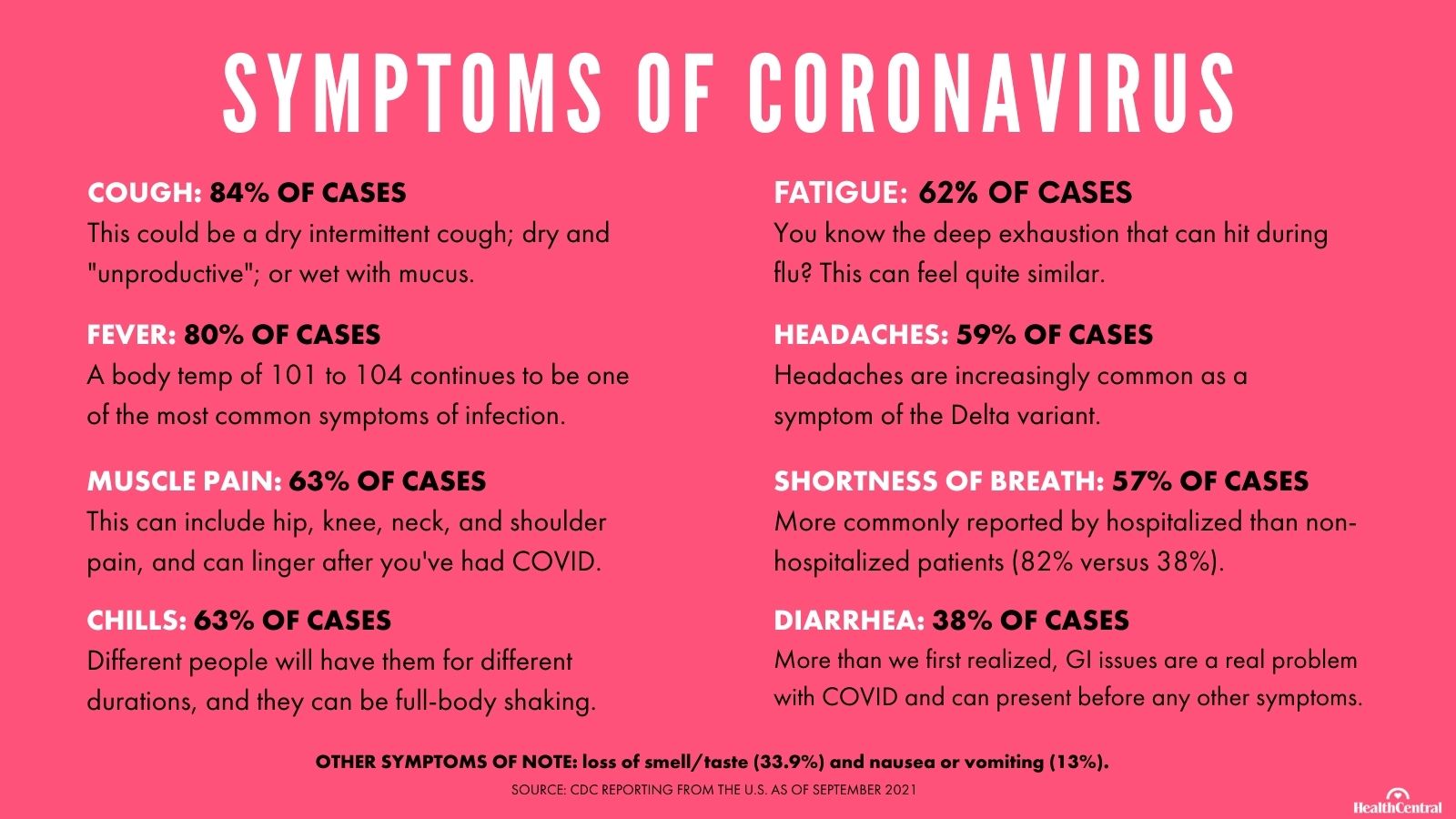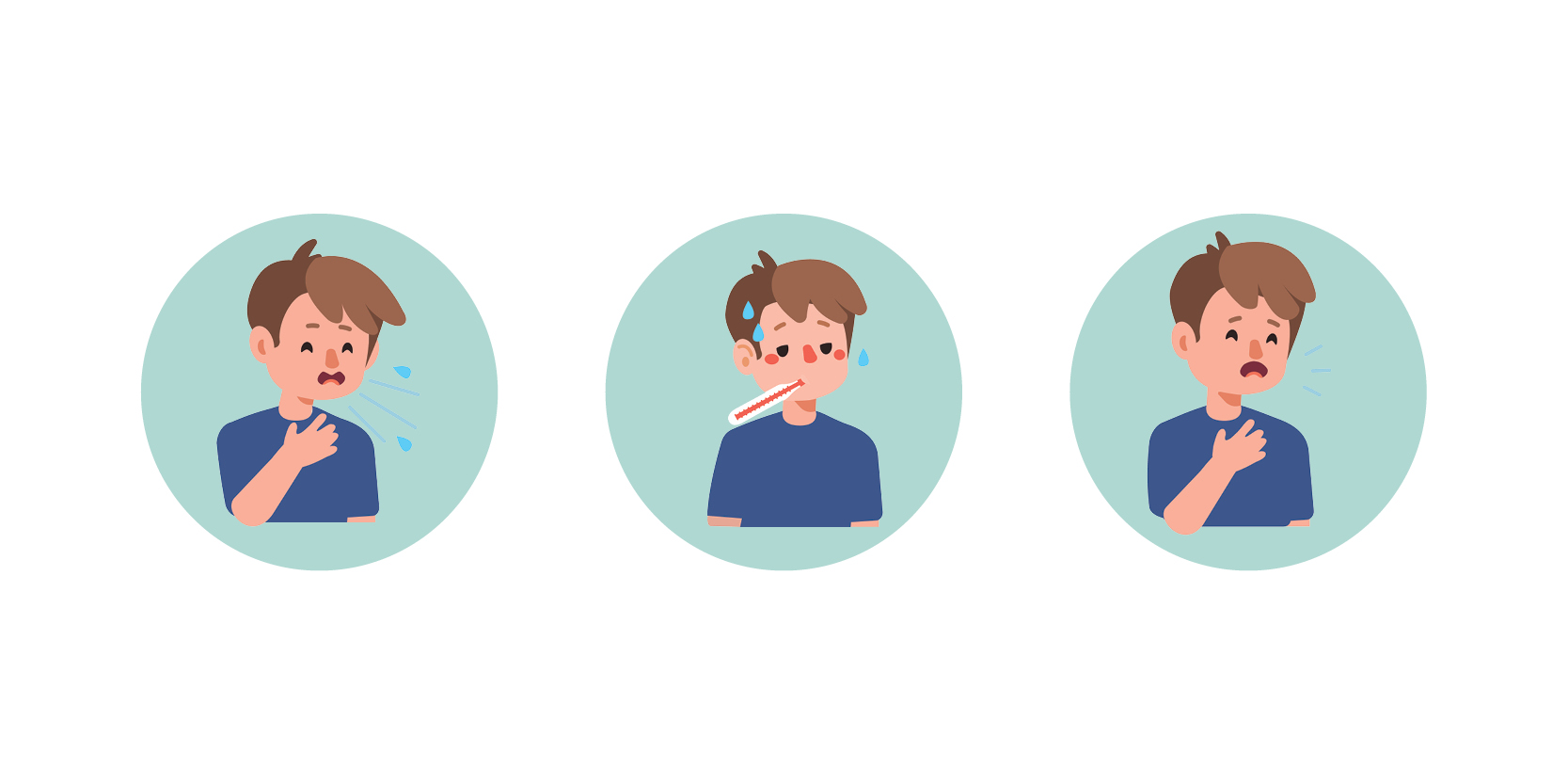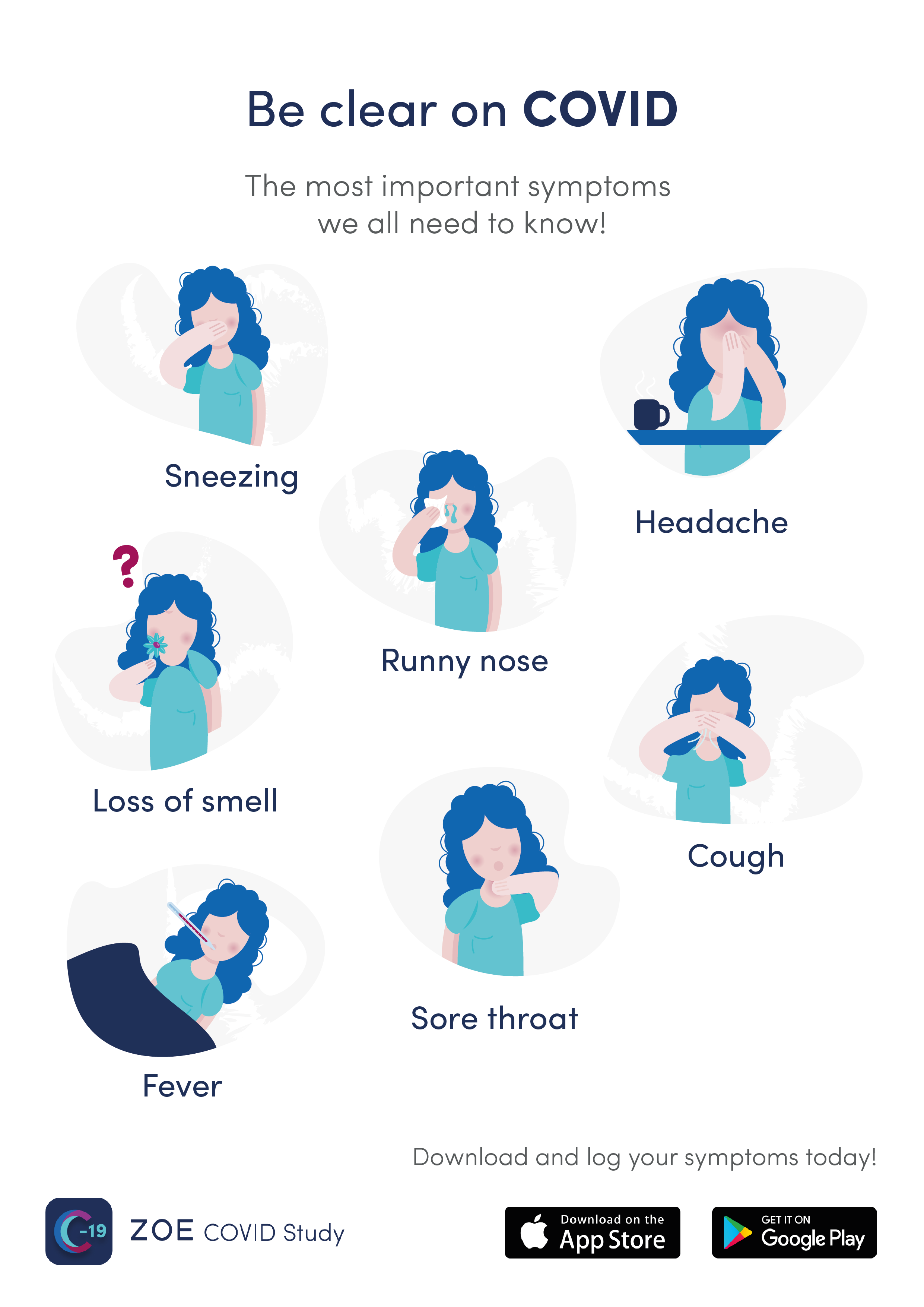
Some people can present symptoms for weeks of months after their initial recovery. Regardless of the variant, the duration of symptoms is shorter for those who received three doses of vaccines (Delta mean duration 8 vs. Duration of acute symptoms for those with the Delta variant was longer than those with the Omicron variant (mean duration 9 days vs. Those infected during the Omicron wave are less likely to experience at least one out of the three classic COVID-19 symptoms (fever, loss of smell, and persistent cough) compared with individuals infected during the Delta wave. With the Omicron variant, loss or altered sense of smell is less prevalent than with the Delta variant, and sore throat and hoarse voice were significantly more prevalent. Note: It is important to evaluate whether the patient's symptoms are new, worsening, or different from their baseline.

Gastrointestinal symptoms (nausea, diarrhea, abdominal pain).Table 1: Common, less frequent and rare symptoms for individuals with COVID-19 during the Omicron wave Table 1 below outlines the common, less frequent, and rare symptoms reported by those with COVID-19 during the Omicron wave. Patients should always be encouraged to seek medical consultation if experiencing worsening symptoms of concern. The patient however, should be advised to take a Point of Care antigen or NAAT test for SARS-CoV-2, when and where available, and follow local/regional public health authority recommendations for cases and contacts. Testing may either not be available, or accurate, early in the course of illness. With Omicron, clinical presumptive diagnosis should be considered with symptoms compatible with COVID-19 and a history of contact with known case(s). When fever occurred in Omicron cases, it was more frequently reported in unvaccinated than in vaccinated cases.Īs new variants emerge and more of the population becomes vaccinated, there will be ongoing changes in the patterns of symptoms that individuals experience. This response is different than the predominant symptoms earlier in the pandemic, which included fever, cough, chills and muscle pain.

During the Omicron wave that began in November 2021, those who have had at least 2 vaccinations reported milder symptoms typical symptoms reported during the Omicron wave included runny nose, headache, sneezing, and sore throat.

This study found that symptom frequency and severity has varied by circulating variant and by vaccination status. The ZOE COVID Study from the United Kingdom is a comprehensive system that tracks COVID-19 symptoms. To date, there remains no comprehensive list of symptoms that has been validated to have high specificity or sensitivity for COVID-19. Symptoms that are absent at the onset of illness may develop over time with disease progression. Published reports often over-represent individuals who have more severe symptoms, and these may differ across care settings and between different age groups and vaccine statuses.


 0 kommentar(er)
0 kommentar(er)
